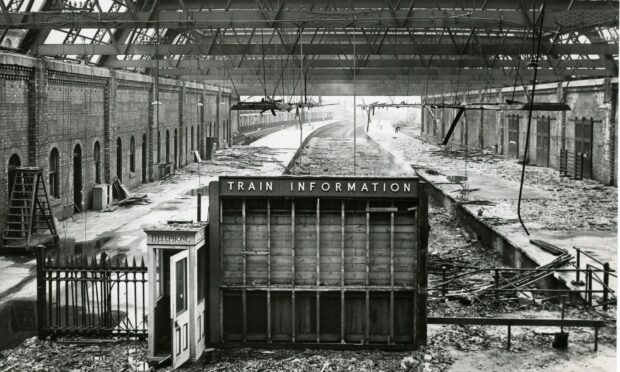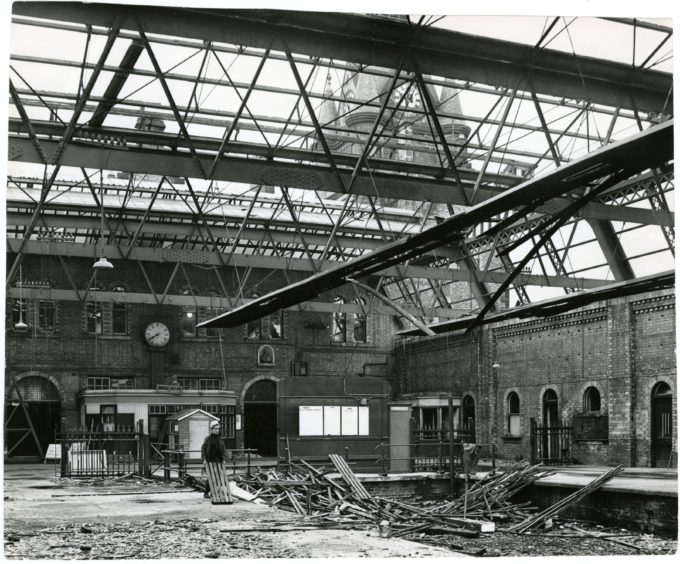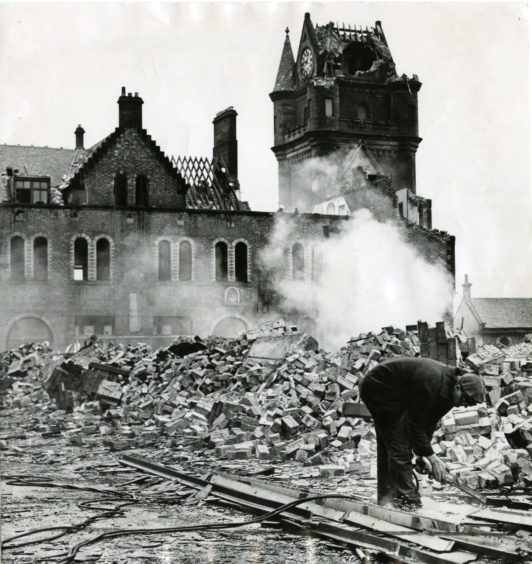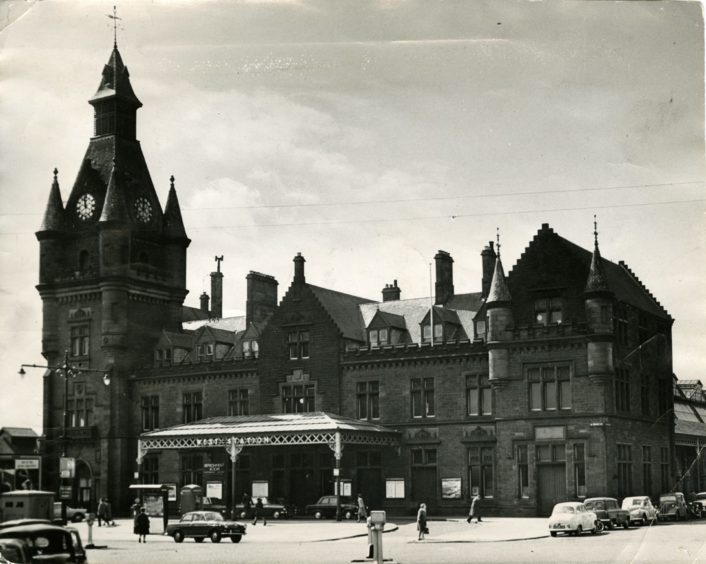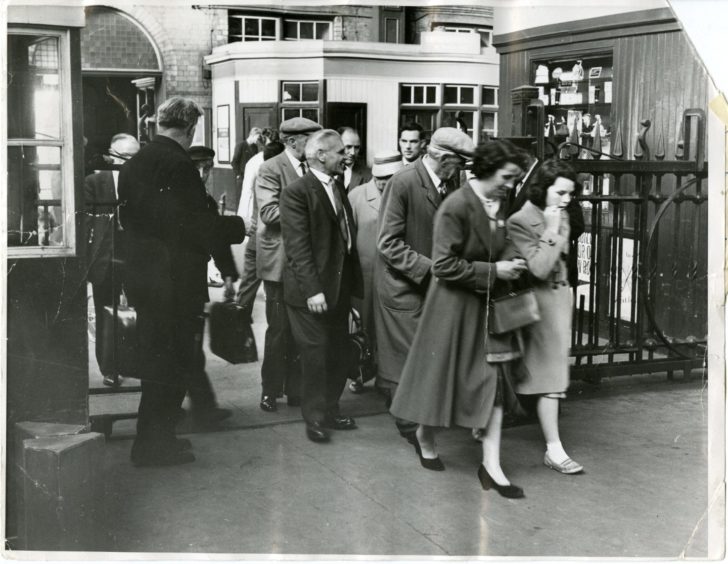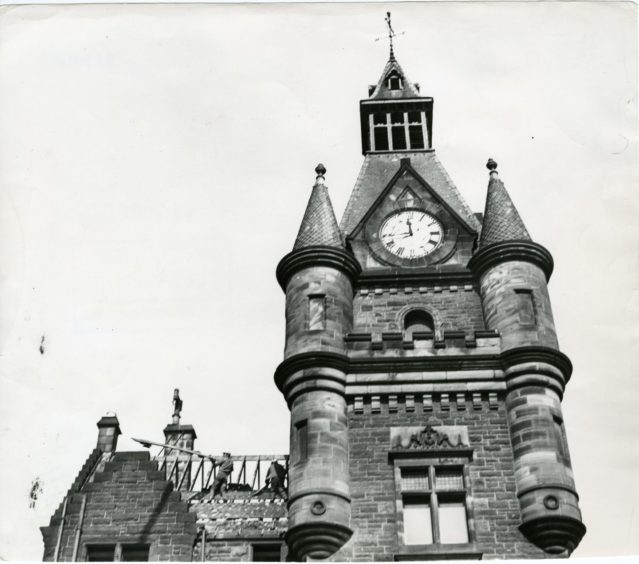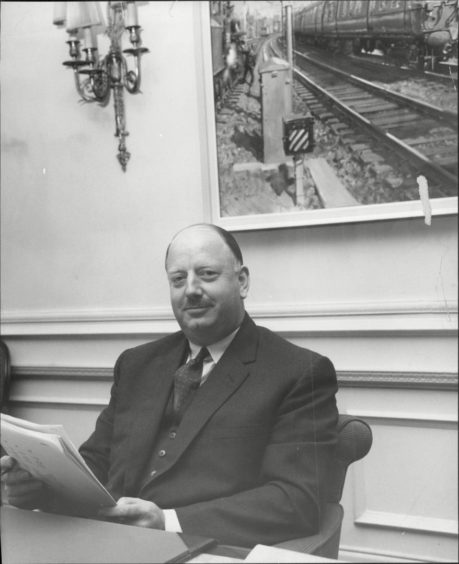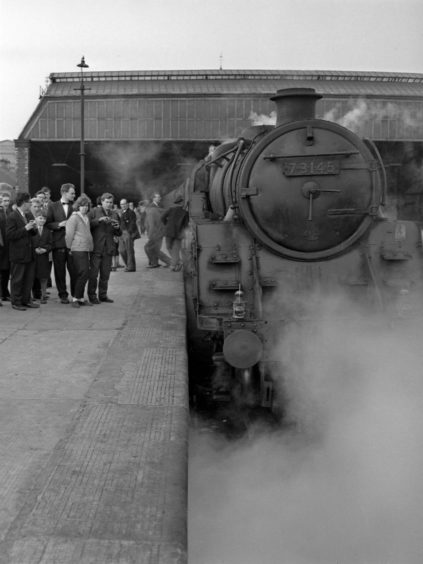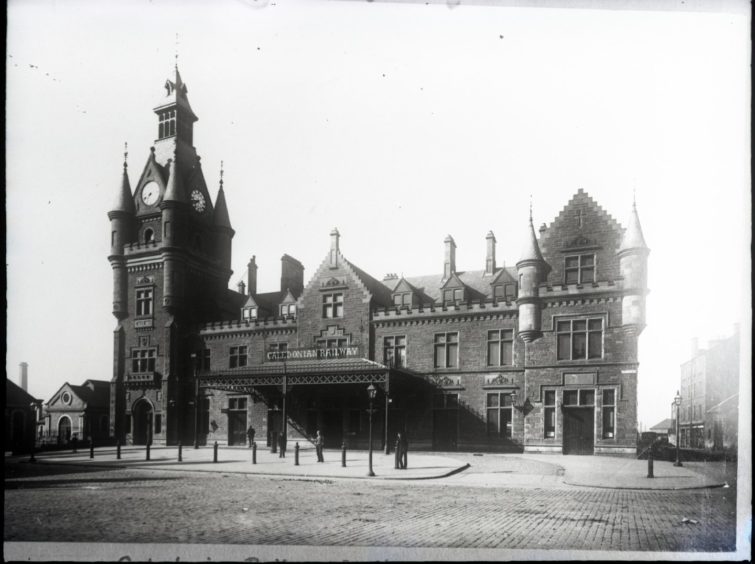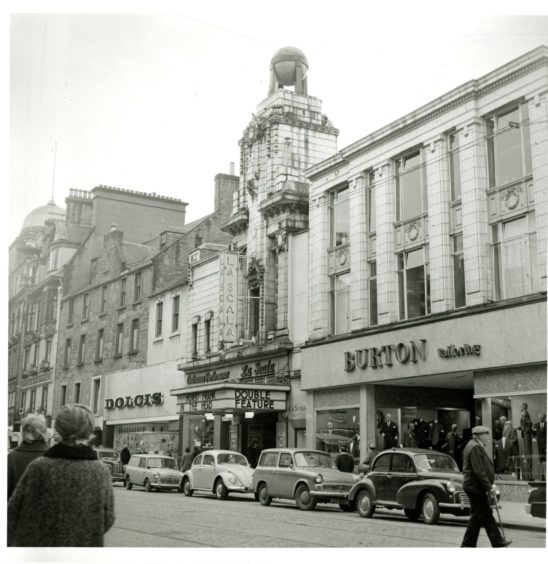Dundee West Station was reduced to a pile of rubble 55 years ago after the cathedral celebrating steam was pulled down.
In 1966, three railway stations were merged into one.
Dundee East was already out of use, Dundee West was demolished, and the Tay Bridge Station was renamed “Dundee”.
The demolition of Dundee West took 10 weeks and cost the city £1,150.
Dundee firm Charles Brand started the demolition in April 1966 and the first task was to remove thousands of panes of glass from the roof over the platforms.
They were smashed down onto the ripped up track and platforms.
Then the steel roof beams were pulled down.
The platforms below ground level were kept and incorporated into Tay Bridge Station.
But it was never quite the same, as the spectacular building disappeared from the city’s landscape forever.
But could the building have been kept and reused?
A victim of circumstance?
Local historian Kenneth Baxter from Dundee University said: “In architectural terms there is no doubt that it was a great loss, as from all the pictures you see of it, it was clearly an attractive building which stood out.
“In this period there were quite a lot of important railway structures lost due to redevelopment and rationalisation of services.
“Euston Arch is the most famous, but in Scotland, as well as Dundee West, you have the example of St Enoch in Glasgow, an outstanding building which closed in 1966 and was eventually demolished.
“Dundee West was in some ways a victim of circumstance.
“After nationalisation of the railways there was a certain inevitability that there would ultimately be a rationalisation of services and facilities that effectively duplicated each other.
“Thus, Dundee did not really need two, let alone three stations within walking distance of each other.
“As well as this, even before Beeching, local services in the Dundee area had started to be cut back as uneconomic, and indeed Dundee East had already been closed.
“The loss of the Newtyle line as passenger route in 1955 meant that Dundee West had lost a number of its services and by the 1960s it was clear Tay Bridge Station could handle those services which still used the West Station.
“With British Railways needing to save money it was an obvious solution to reduce Dundee to one main station, and that had to be Tay Bridge as it was a through route to Arbroath and Aberdeen, while West was a terminus.”
First station was built of wood
Dundee West Station stood opposite where the Malmaison hotel is today, virtually sharing the site with Tay Bridge Station, which operated at the same time.
The station which was demolished was actually the third on that site and was completed in 1889 by the Caledonian Railway.
The first station was made of wood and was built to serve the new Dundee to Perth line in 1847.
In 1864, the original station was revamped with the wooden structure demolished and replaced by a handsome building with a clock tower on South Union Street.
It served the city and railway companies well but as traffic increased and the fortunes of railway companies soared, an even more impressive central station was planned.
Dundee West was operated by the Caledonian Railway at this time and it was their chief engineer, Thomas Burr, who came up with the initial design.
The building was constructed by Edinburgh firm Blyth & Cunningham, the main construction company for Scotland’s railways.
Opened in 1889, it was made from red sandstone with a broad semi-circular booking office that offered access to four platforms.
The station boasted an impressive timetable with regular services to Glasgow, Edinburgh, Manchester, Liverpool and London Euston.
“Through coaches” took passengers to the west of England, and sleeper trains served many routes.
Local traffic ran to Perth, Gleneagles, Crieff and Blairgowrie via the Dundee and Newtyle railway.
In 1922, at the end of Caledonian Railway’s existence, before it was merged into the London, Midland and Scottish Railway, there were nearly 100 staff employed at the station, including around 40 porters.
In a typical month the Dundee West yard handled 15,000 tons of minerals, mostly coal for the many factories in Dundee.
Death knell for the station
However, with passenger numbers dwindling and only a handful of trains running from the 75-year-old station on a daily basis, it seemed inevitable that the axe would fall.
The death warrant was signed by Dr Richard Beeching, chairman of the British Railways Board, who identified 2,363 stations and 5,000 miles of track for closure.
Despite the rail union ASLEF arguing for Dundee West to be retained and a local pressure group, Save the West Station, campaigning for it to be kept as a bus station, plans to demolish the station – for the construction of approach roads to the new Tay Road Bridge – progressed.
The last train left on May 1 1965 – the 8pm to Glasgow – and more than 200 people gathered to wave it off before the station was demolished the following year.
Dr Baxter said: “Could some of the building been kept and reused?
“That is a more interesting question.
“You have the example of Edinburgh Princes Street (like Dundee West built by the Caledonian Railway), which closed about the same time, where although the station was almost entirely demolished, the famous Caledonian Hotel that was built into it survived.
“Interestingly in the 1890s when plans were mooted to close the three stations in Dundee and replace them with one large station mention was made that Dundee West could be turned into a station hotel.
“Could this idea have been dusted off or could the main buildings have found another purpose?
“Possibly, but with Tay Road Bridge and its approaches being constructed , you can understand why demolition of the station would have seemed like the more obvious option.”
One of Dundee’s finest buildings
Author John Minnis described the demolition of the “wonderful” station building as “perhaps the most tragic loss” of a piece of railway architecture in Scotland.
“What has been lost is undoubtedly one of Dundee’s finest buildings, befitting its status as a major city, with communication links all over Britain,” he said.
“If it had survived, it would be an impressive addition to the seafront regeneration, as well as providing additional capacity for the much increased train service to and from Dundee.
“It would be a reminder of the once major part that commerce played in the Dundee economy, with jute and jam from its many factories being sent all over the country.”
Dundee West Station was another casualty in the “Great Knockin’ Doon” of the 1960s.
Much of the historic city centre vanished and Dundee West Station closed on the same day as the La Scala cinema which was also demolished.
The cinema had a narrow façade, which consisted of a large square tower clad in white tiles, and topped by a huge golden globe.
Another casualty was the triumphal Royal Arch which stood at the junction of Dock Street and Shore Terrace.
Also demolished in this area were the East Station and the Empress Ballroom.
